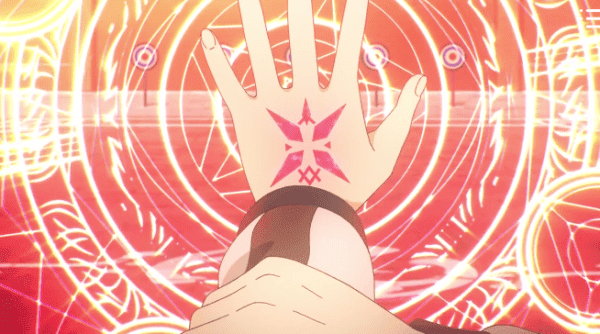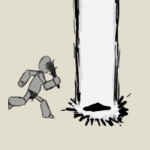One of the most popular spells for druids to use in DnD 5e is Moonbeam. My players love using this spell, so I have seen quite a lot of uses for it over the years.
However, online, you don’t really see any substantial discussion about how to use this spell and what benefits it might have over spells for Druids. Another thing that stands out to me is how many questions there are about this spell.
In this guide, I will try to explain to both new and somewhat more experienced players everything there is to know about Moonbeam 5e. That way, you will be able to use it correctly in your next campaign and make optimal use of it if you decide to pick it as a Druid.

Moonbeam 5e requirements
| Level | Casting time | Range | Components | Duration | Class |
| 2 (evocation) | 1 action | 120 feet | V S M | 1 minute | Druid |
This table is for those who don’t see well and use TTS. You can find an image summary to use at the bottom of the chapter if you aren’t a beginner. The official source on this spell is the PHB on page 61.
Level and school
Moonbeam is a spell you usually have access to by the second session of your DnD campaign since it is a 2nd level evocation spell. The evocation school of magic is known to use powerful elemental effects.
The military often uses this school due to its utility and ease of learning. However, the school is also quite popular amongst bandits and adventures since those two groups often have military experience. If you want to learn more about the evocation school, read more on this in the Earth Tremor 5e guide we wrote.
Casting time
You will need to use a regular action to cast this. However, you can still use a bonus action after you have cast Moonbeam. The beam appears immediately, so you do not need to wait. You can also use an action to move the beam up to 60 feet in any direction you want.
Range
Druids who want to stay safe and have quite a lot of distance between them and the enemy are going to love the 120 feet range that Moonbeam has. It is one of the best long-range attacks for Druids at the beginning of the game.
Components
You need quite a lot of components for Moonbeam, and they can be pretty hard to get depending on your DMs generosity. To cast the spell, you need all three components, Verbal, Somatic, and Material. The material components you need are a couple of seeds from any moonseed plant and a piece of opalescent feldspar. Here is some more information in case you are interested in spells that do not use any material components.
Duration
Moonbeam lasts up to one minute and is a concentration spell. Concentration is quite hard to understand if you are new to DnD 5e so that I will give a bit more info on this here. If you have cast a concentration spell, this magic will halt and disappear when you
- Cast another spell that uses concentration
- You become incapacitated
- There is an occurrence according to the DM that requires you to make a check
- You take damage, and you fail a CON saving throw
- You willingly end your concentration
Not all concentration magic has such a short duration; a great example of a long-term concentration spell is Conjure Elemental. This is a conjuration spell we have written an extensive guide about too.
Class
There is only one class that can naturally use the Moonbeam spell in 5e, and that is the Druid. You can HomeBrew a class that can use the magic if you want. However, that is for more experienced players since HomeBrew tends to be overpowered or unbalanced when you do this for the first time.

This happens when you cast Moonbeam
- Say the encantation
- make a hand suggestion
- your materials dissapear
- choose a target within 120 feet
- Creature does a CON throw
Casting and Effects
When Moonbeam is being cast, the Druid in your party starts to speak and audibly says the magical incantation. Then, he simultaneously makes a hand gesture, and the materials – seeds of a moonseed plant and a piece of opalescent feldspar – disappear, and a silvery beam of pale light shines down to the ground from the sky.
Moonbeam – Spell Details
This cylinder can shine down at any place the Druid chooses, as long as the Moonbeam is within the 120 feet range. The beam of moonlight has a 5-foot radius and is 40 feet high. For the duration of the magic, a dim light fills the cylinder.
Damage and Saving Throws
When a creature enters the 5-foot radius of the dim light of the Moonbeam for the first time. Or when it has been pushed there and starts its turn there, ghostly flames engulf the creature’s body and cause almost unbearable pain. The target of the spell must now make a constitution saving throw.
When the creature has failed the CON saving throw, it takes 2d10 damage. On the other hand, when the creature has made a successful saving throw, it will ‘only’ take 1d10 damage.
Effects on Shapechangers
Don’t forget! Moonbeam is super effective on shapechangers! Not only do these creatures have a disadvantage on their constitution saving throw, but they will also revert to the original form and won’t be able to shapeshift for as long as they are in the beam of light.
Moving the spell
Another exciting feature of this evocation magic is moving the spell when it is your turn. You will have to sacrifice one action for this when it is your turn. By doing this, you will be able to move the beam for up to 60 feet in any direction to burn enemies with the light.
Scaling and Spell Slot
Moonbeam can scale with your character´s level. When you place this spell in a higher spell slot, the damage increases by 1d10 for every slot above the second level. If you love scalable magic, Cloudkill 5e is a great attack to add to your arsenal of dangerous magic. Cloudkill is excellent to use if you are playing as a villain or if you are a DM using a lich.
Deep dive: This is how the spell works
Moonbeam is described a bit vaguely in the source materials, so quite a lot of people interpret the workings and rules of this evocation magic wrong or too broad. In this part, I will try to explain to my best ability how the spell actually works and how it does not. If you have more questions, the odds are that I have covered the answer at the bottom of the page in the Moonbeam FAQ part of this guide.
The first question I see people ask a lot is what counts as entering? According to the sage advice by Jeremy Crawford on Moonbeam: the creature is deemed to enter the AoF when a creature has entered or passed into the radius of the light. The spell will only damage when the creature is in the ray when it is its turn, and it is in the spell’s radius.
Summary
- This spell does not deal damage when it simply passes over you.
- Moonbeam does do damage when you enter the light
- The spell does do damage when you are in the light when it is your turn
Some extra clarifications on Moonbeam:
- Entering the ray of light does not need to be voluntary, but it can be.
- Creating the area of effect on the creature or moving it on the creature does not automatically do damage. It does when the creature is still in the Moonbeam when the turn of the creature has started.
- You can thus hurl a creature in the radius of the ray of light, but it won’t do damage right away.
- When the creature enters the spell on its turn, it will do damage straight away when it was the first time it entered.

Is Moonbeam worth it?
Reading this guide might get you wondering, is Moonbeam a good pick for my Druid, or am I better off picking another 2nd level spell to deal damage to creatures?
Great for druids
Moonbeam is one of the best spells for Druids. It instantly creates a hazard on the battlefield that creatures can not enter without taking some significant damage. Next to that, the long range of Moonbeam and the fact that you can move the spell 60 feet per turn makes the magic attack extremely dangerous.
I consider the fact that there is a unique effect when the spell is cast/used against shapechangers a niche use and just a tiny bonus. You will not come across shapeshifters a lot in the official DnD campaigns, so the utility of the spell is pretty meager.
However, if you are playing a Homebrew campaign, and you ask your DM to incorporate them, that changes the equation a bit. Remember, when hit with the spell, a shapechanger will need to do a CON Saving throw with a disadvantage.
| Pro | Cons |
|---|---|
| Creates a hazardous area on the battlefield | Niche effect against shapechangers |
| Long range allows for versatile positioning | Limited utility in official DnD campaigns |
| Can deal significant damage to creatures | Less effective without shapechangers present |
| Ability to move the spell for added versatility | Requires sacrificing one action to move the spell |
| Effective scaling with higher spell slots |
shapechanger creatures in 5e
- Barghest
- Lycanthrope
- Lymrith
- Yochlol
- Succubus
- Vampire
- Graz’zt
Best uses for Moonbeam in DnD
There are quite a lot of exciting uses for both players and Dungeon Masters to surprise the other party; I will outline a couple of my favorite uses of moonbeam 5e that I have seen in actual play.
1. Area denial
My favorite – and the most common – use for Moonbeam is to deny an area to your enemy. No matter if you are the DM or a player, this is one of the best spells to lock down an area.
The rules of the magic are pretty straightforward; if a monster enters the spell for the first time, and when it is the turn of that creature, the creature will take damage. The radius of the light is 5 feet, which is typical for spells. So, some great places to put your beam of moonlight would be a corridor or a forest path.
2. Running away
When you try to escape a hoard of enemies, it often is a great idea to do some damage in doing so. Not only are you killing off some enemies for the next you will attempt fighting your foes, but you might also turn the odds enough that you can turn around and fight.
If you are running through, for example, a narrow canyon, you can lock it off with this spell. You can also combine this with another spell that has a 5 feet radius. We have written an article on magic just like that, our Create Bonfire 5e guide!
Remember that both Create Bonfire and Moonbeam are concentration spells, so you will need another caster to set up the other spell. You can only cast and use one concentration spell at a time.
3. Crowd Control
When you are being attacked by a mob, putting some objects in their path of movement can be one of the most effective ways to split up overwhelming groups. A great way to do this even more effectively is by using a Wall of Water spell and having monsters go through an opening op 5 feet.
Unfortunately for those creatures, a ray of moonlight is shining on those 5 feet. If they want to go through, they will take 2d10 damage if they fail their CON saving throw and 1d10 if it was successful.
4. Ambushing and surprising
Imagine this. You are about 110 feet away from a fortress. There are a couple of soldiers in there, and you want to thin out their numbers. What if you cast a Moonbeam at the exit of that fortress and cause a disturbance.
The commander will indeed send a couple of poor fellows outside straight into the light. Remember, the ray of light is not a storm of flames and bright colors, but just a bit of dim light. That means they will probably unsuspectingly enter the beam of moonlight and get some severe damage done to them. All while you are far away in safety.
You can also set up an arcane gate and have the exit covered in the light of this evocation magic and have monsters, and NPCs go through the gate to damage them.
Summary table
| Use Cases | Description |
|---|---|
| 1. Area Denial | Moonbeam is effective for denying an area to enemies. Placing the beam in strategic locations, such as corridors or forest paths, can lock down an area and cause damage to creatures that enter. |
| 2. Running Away | When trying to escape from enemies, Moonbeam can be used to inflict damage while retreating. By blocking off narrow passages or combining it with other spells like Create Bonfire, you can hinder pursuers and potentially turn the tide of battle. |
| 3. Crowd Control | Moonbeam can serve as an effective crowd control tool. Combining it with spells like Wall of Water can create obstacles for groups of enemies, causing damage to those who attempt to pass through the beam of light. |
| 4. Ambushing and Surprising | Moonbeam can be used to set up ambushes and surprise attacks. By casting the spell at strategic locations, such as fortress exits or near an arcane gate, unsuspecting targets can enter the beam and suffer significant damage. This can be particularly useful when launching attacks from a safe distance. |

Moonbeam 5e FAQ
Can Moonbeam do double damage?
Yes, Moonbeam can do damage two times in around. However, for that to happen, you will need to move the creature into the AOE of the spell. Then move it back out, and put it back into the AOE. Note that I said in around. You can not damage the same creature two times in the same turn.
Can you use Moonbeam inside and indoors?
You can use the spell inside and indoors. The reason for that is a common one. Namely, there is nothing in the rules saying you can not do this. As long as the rules in 5e do not say it is impossible, it (probably) is possible!
Are druids the only class that can use Moonbeam?
Yes, in the official version of DnD, they are the only class that can use this spell in a traditional way.
Can you use a move action to move Moonbeam 5e?
To move your beam of moonlight, you will need to use a regular action. You can find the rules for this on page 61 of the Players handbook. If you use your action, you can move the ray of light 60 feet into any direction you want.
When do you take damage from Moonbeam?
There are a couple of scenarios where you take damage from Moonbeam.
– You willingly enter the Moonbeam when it is your turn.
– You are hurled into the beam when it is your turn.
– You are in the beam of light when it becomes your turn.
You can not take damage twice in the same turn.
What type of damage does Moonbeam do?
The spell does radiant damage. Some other spells that do this kind of damage in 5e are Binding Smite, Branding Smite, Crown of star, and Dawn.
Can Moonbeam travel through walls, objects, or a creature’s cover?
Yes, the rules in 5e do not say that this is impossible. So, we need to assume that Moonbeam can travel through walls, objects, and whatever other cover a creature has. As long as the target area is within a range of 120 feet, it will not pose a problem.
Final thoughts
Moonbeam in 5e is a great spell to have as a Druid. There are little to no drawbacks, and it is perfect for adding a long-range magical attack to your arsenal.
The damage it does is quite good when your character is low-level, and you can scale the spell a bit by putting it in a higher spell slot. When you get to the higher levels, and most definitely when you reach 15 or more, you will better options to do reliable and higher damage with magic as a Druid.
If you want to know more about long-range spells that are underestimated, this Magic Stone guide is sure to help you out on your quest for knowledge. Did you know that at the beginning levels, the pebbles you throw at your enemies are more dangerous than fire bolts?
